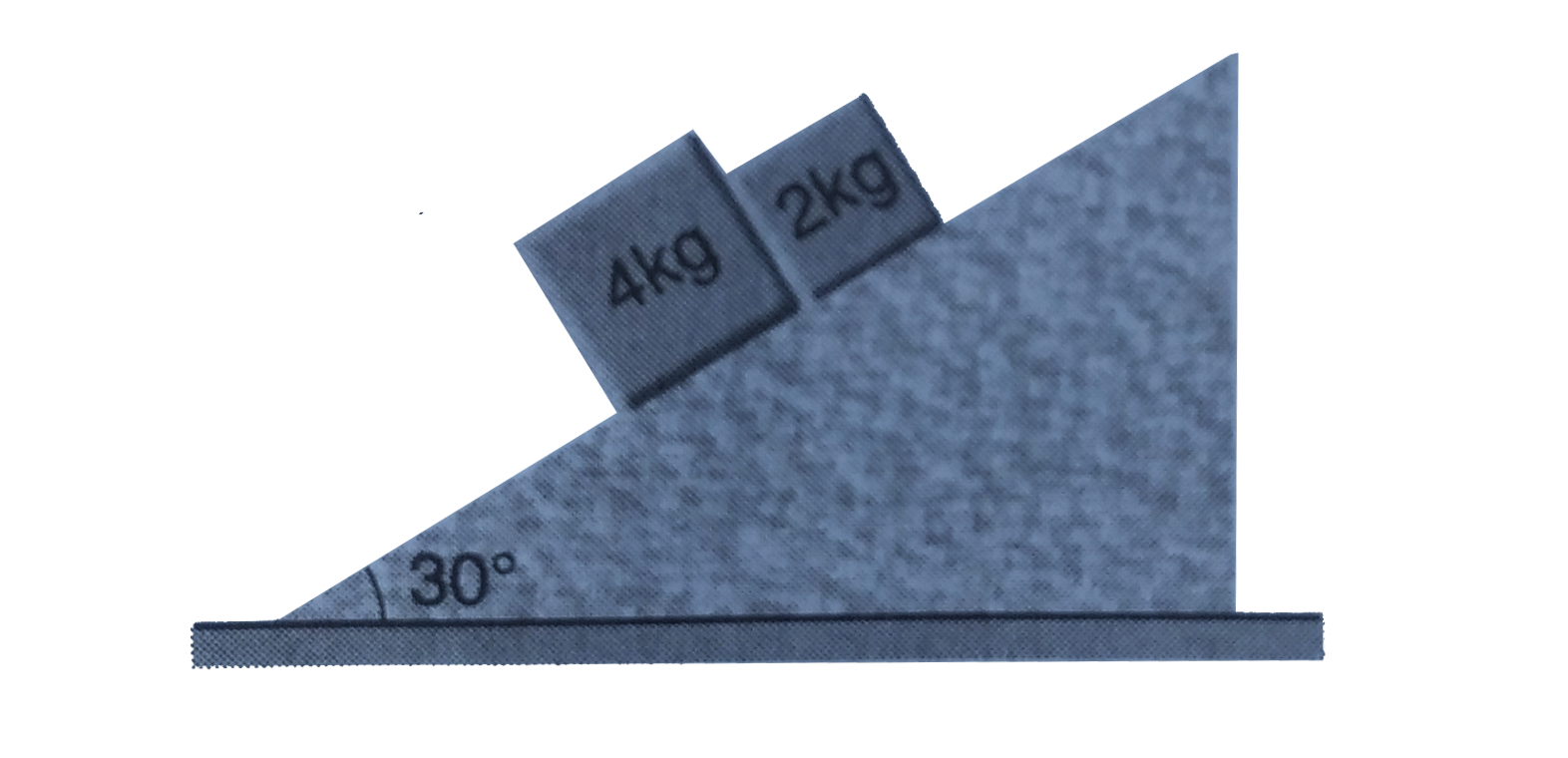Two blocks of masses 5 kg and 3 kg are placed in contact over an inclined surface of angle , as shown. is friction coefficient between 5 kg block and the surface of the incline and similarly, is friction coefficient betweem the 3 kg block and the surface of the incline. After the release of the blocks from the inclined surface.

If and then 5 kg block exerts 3 N force on the 3 kg block
If and then block exerts 8 N force on the 3 kg block
If and then 5 kg block exerts 1 N on the 3 kg block
If and then 5 kg block exerts no force on the 3 kg block.
The correct Answer is:A, D
Case I :
Along the incline, acceleration of 5 kg block will be less than acceleration of 3 kg block provided they move alone on the incline. The reason is greater friction coefficient of 5 kg block, as acceleration along the incline is
One to the contain, both blocks will move together. In this case FBDs of both are shown.

For 5 kg block
For block
.
Topper's Solved these Questions
- DAILY PRACTICE PROBLEMBOOK - RESONANCECHAPTER - DAILY PRACTICE PROBLEMEXERCISE - DPP No.35
20 Videos
- DAILY PRACTICE PROBLEMBOOK - RESONANCECHAPTER - DAILY PRACTICE PROBLEMEXERCISE - DPP No.36
20 Videos
- DAILY PRACTICE PROBLEMBOOK - RESONANCECHAPTER - DAILY PRACTICE PROBLEMEXERCISE - DPP No.33
20 Videos
- CURRENT ELECTRICITYBOOK - RESONANCECHAPTER - CURRENT ELECTRICITYEXERCISE - High Level Problems (HIP)
21 Videos
- ELECTRO MAGNETIC WAVESBOOK - RESONANCECHAPTER - ELECTRO MAGNETIC WAVESEXERCISE - Exercise 3
27 Videos
Similar Questions
Knowledge Check
In the arrangement shown in figure coefficient of friction between 5kg block and incline plane is μ=0.5. Friction force acting on the 5kg block is
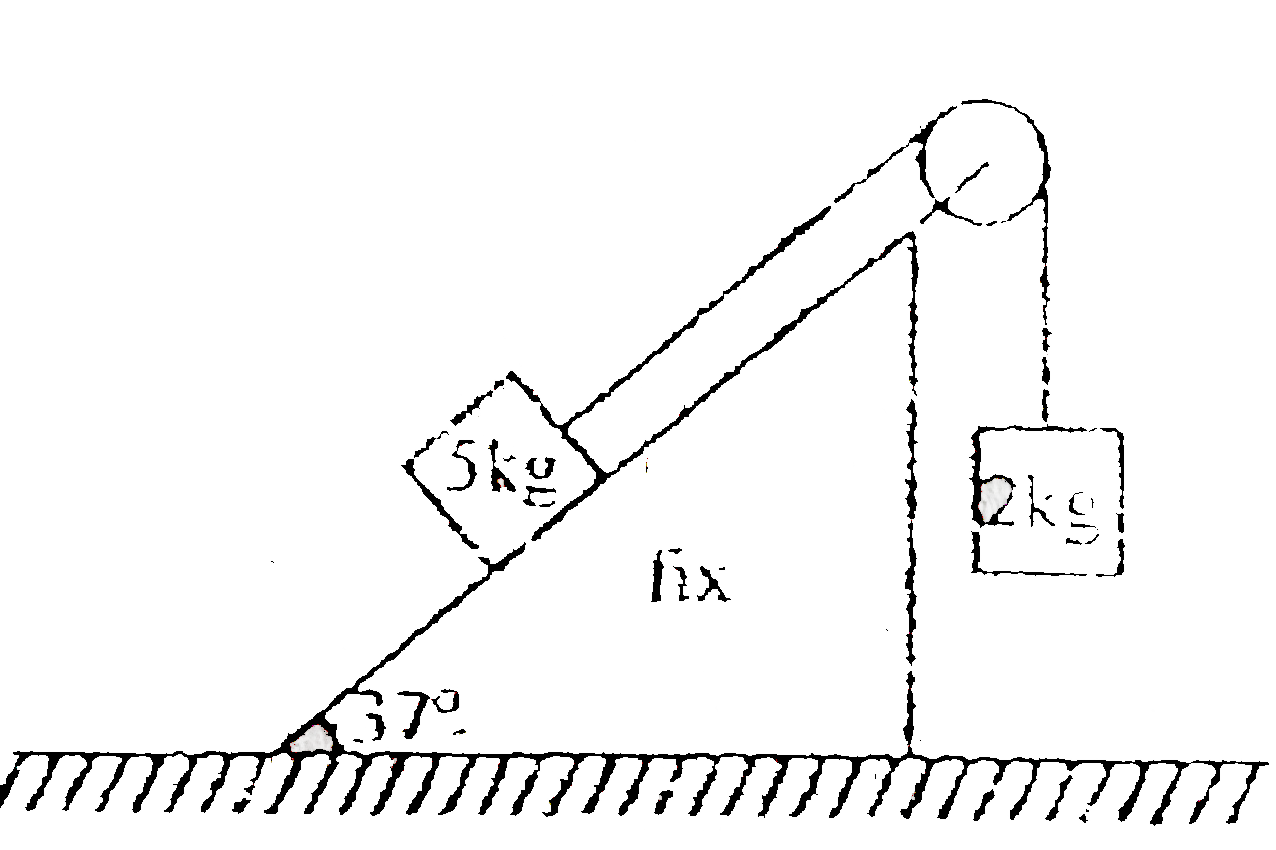 A20NB15NC10ND5N
A20NB15NC10ND5NA block is stationary on an inclined plane If the coefficient of friction between the block and the plane is μ then
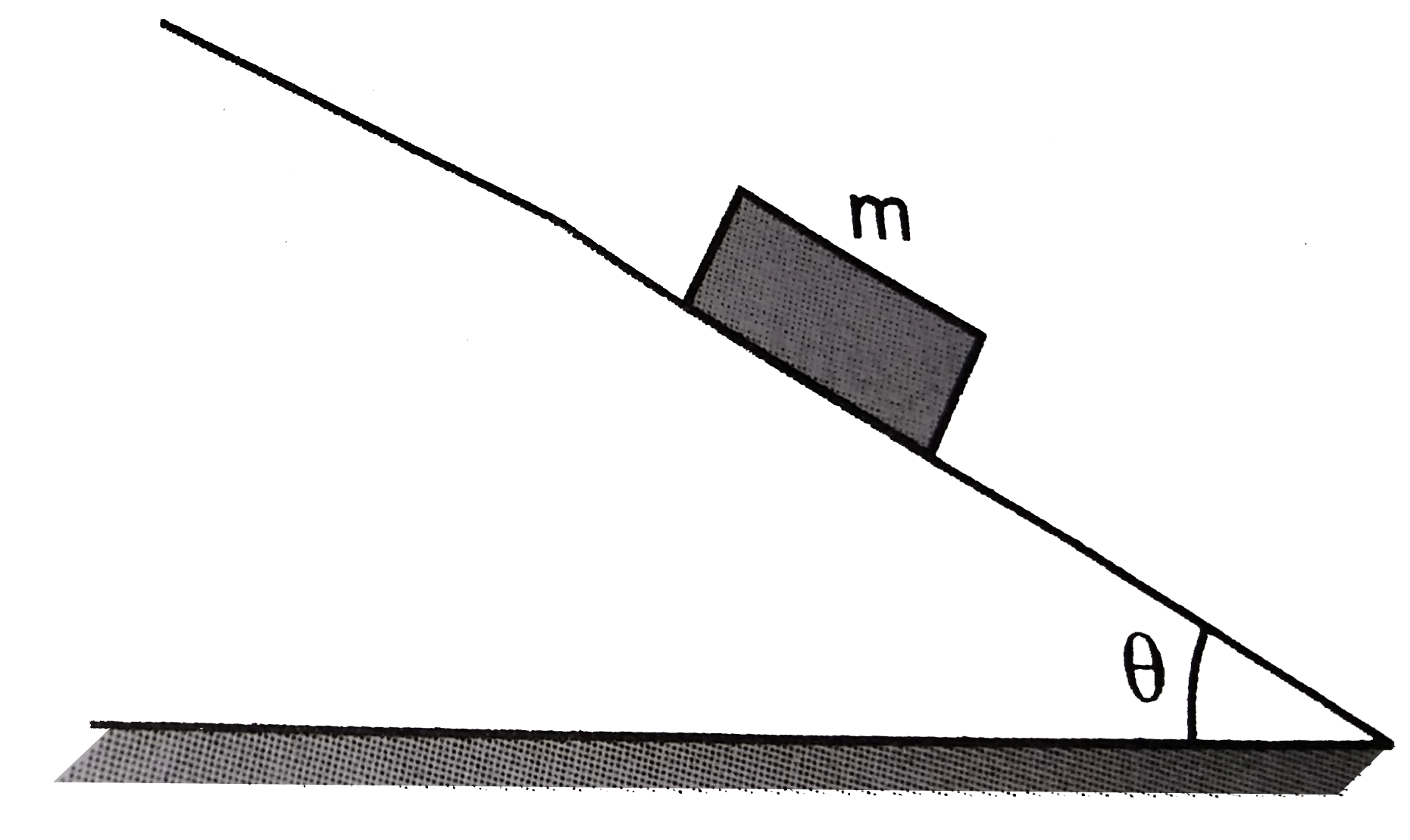 .Aμ>tanθBf=mgsinθCf=μmgcosθDthe reaction of the ground on the block is mg cos θ
.Aμ>tanθBf=mgsinθCf=μmgcosθDthe reaction of the ground on the block is mg cos θ
Two blocks of masses 4 kg and 2 kg are in contact with each other on an inclined plane of inclination 30∘ as shown in the figure . The coefficient of friction between 4 kg mass and the inclined plane is 0.3 , whereas between 2 kg mass and the plane is 0.2 . find the contact force between the blocks .

View SolutionFigure shown two blocks in contact sliding down an inclined surfase of inclination 30∘. The friction coefficient between the block of mass 4.0kg and the incline is μ2=0.30. Find the acceleration of 2.0kg block. (g=10m/s2)
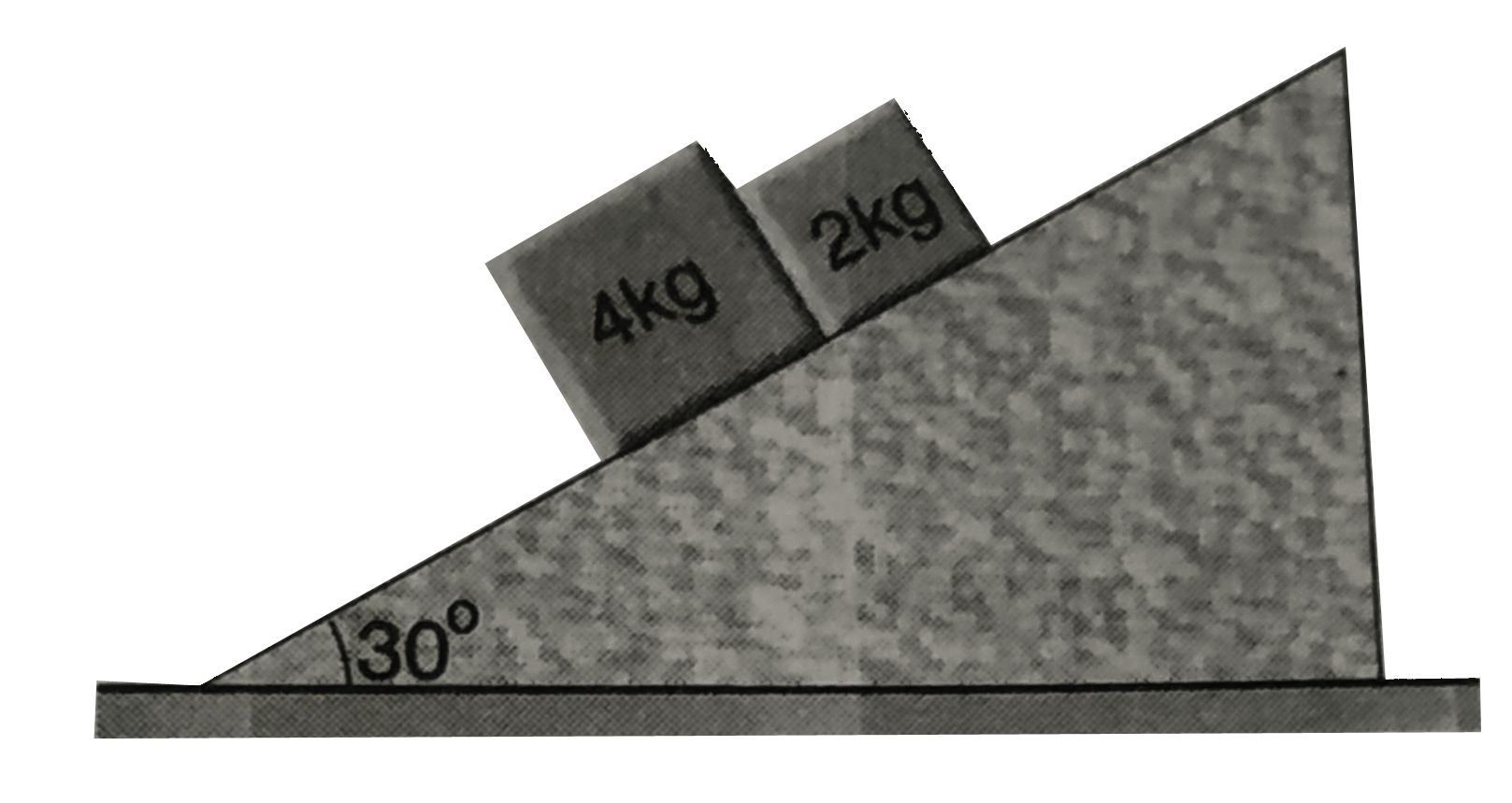
View SolutionA block of mass m=4kg is placed over a rough inclined plane as shown in fig . The coefficient of friction between the block and the plane μ=0.5 A force F=10N is applied on the block at an angle of 30∘. Find the contact force between the block and the plane.
k

View SolutionTwo blocks of mass m1 and m2(m2>m1) are placed in contact with each other on an inclined plane as shown in figure . The coefficient of friction between m1 and surface is μ1 and between m2 and surface is μ2.



View SolutionA block of mass 10 kg is sliding on a surface inclined at 30∘ with horizontal . If coefficient of friction between the block and the surface is 0.5 , find acceleration produced in the block . Take g=9.8m/2 .
View SolutionConsider the situation as shown in the figure. If μ1 is the friction coefficient between block A and incline and μ2 is the friction coefficient between block B and incline. Find the acceleration of block A if (a) μ1=15,μ2=25 and (b) μ1=25,μ2=15.
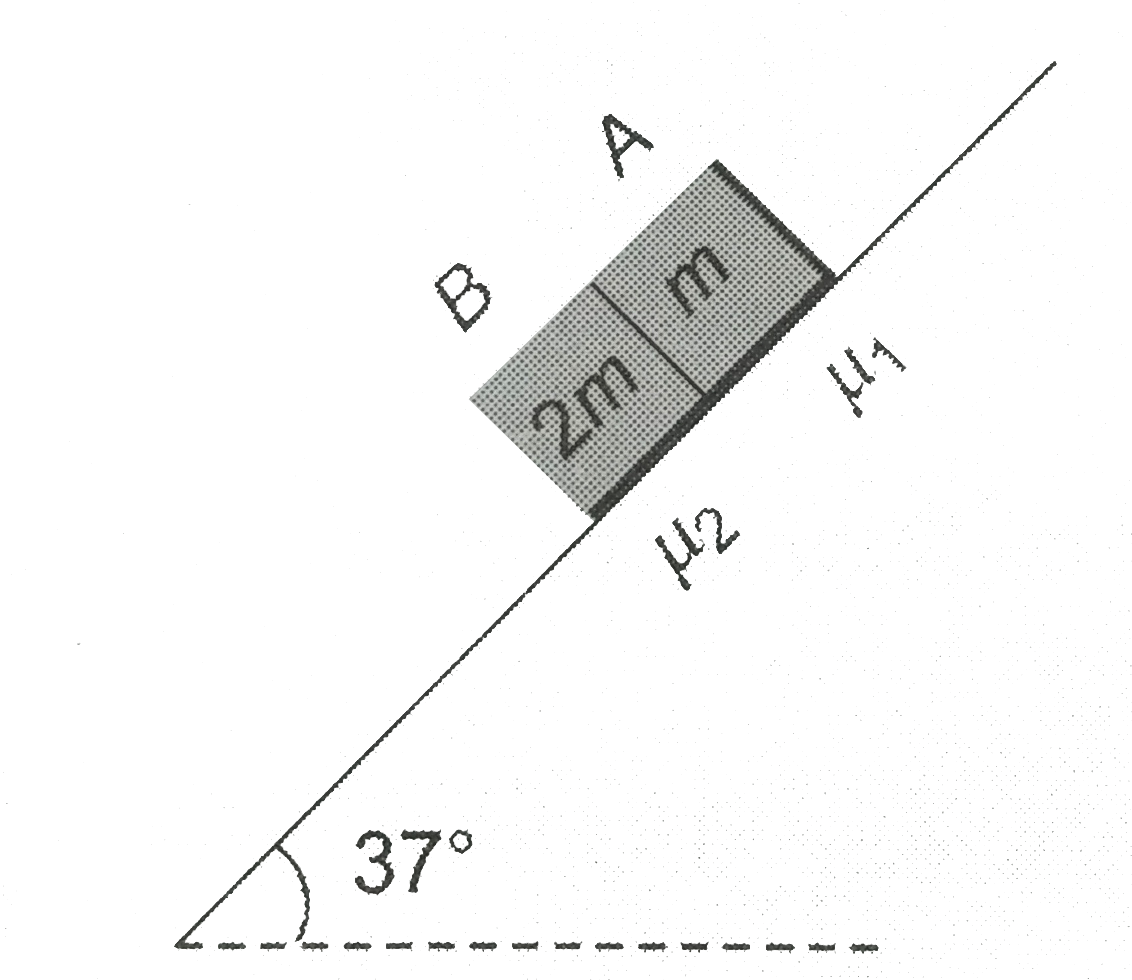
View Solution

